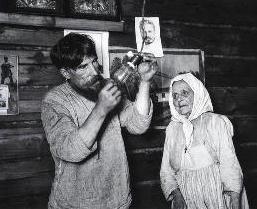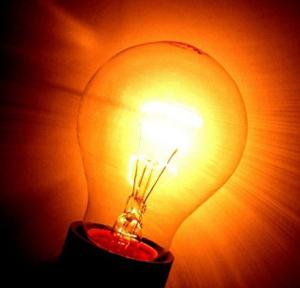This already almost forgotten phrase is now on hearing again. Many people are interested in this name, asking about who came up with Ilyich’s bulb? Let's try to figure it out.
About incandescent lamps
Remember the children's puzzle about a pear that you can’t eat? So this is about her, about an ordinary incandescent lamp, which is still often called in honor of V.I. Lenin. Who invented Ilyich’s bulb ? Well, certainly not the leader of the world proletariat! Although incandescent lamps are almost one and a half hundred years old, it is not so easy to answer the question about their inventor.
The principle of operation of an incandescent lamp is as follows. There is a glass bulb, in it there is a radiator made of wire (usually tungsten). Current flows through the wire, it is heated, electric energy is converted into light. Let there be light!
Work on the creation of such a device since the mid-19th century has been carried out all over the world, including in Russia. Scientists in many countries, experimenting with materials and shapes of spirals, created lamps, to various degrees close to the one that is familiar to the modern consumer. Moreover, inventions were usually patented, and the authors of such patents were probably about a dozen. Who should be considered a real author? In the West, more often than others, the inventor of incandescent lamps is called the American Edison. In Russia, they recall the names of Lodygin and Yablochkov, considering them to be the authors of an invention so important to everyone. By the way, they started talking about Lodygin not so long ago: in the USSR they preferred not to recall this name. Indeed, the most talented electrical engineer did not accept the 1917 revolution, he emigrated to the United States, where he died in 1923. But what does Lenin have to do with all these scientific tales?

About Kashino Village
This name is rather pathetic, propaganda - Ilyich’s bulb. Photos still preserved in the old archives help to recreate the typical rustic atmosphere of the 20s of the last century. A deaf Russian village, dirt, darkness, backwardness - and suddenly a light comes on in the huts. Nothing that a lamp without a lampshade wretchedly hangs from the ceiling and barely smolders. All the same, it is a great blessing, it is a hope for progress, for the best. How can one not perpetuate the name of the one to whom the people owe their involvement in civilization?
Mention of Lenin’s personality in the name of the lighting device arose after the leader’s trip to the village of Kashino in 1920 to open a local power station. The villagers, previously inspired by his fiery speech at the Komsomol congress, decided to electrify the village at their own expense. No sooner said than done! With the help of unused telegraph wires and a dynamo brought from Moscow , a local power grid was built on their own.
And then the leader’s arrival in Kashino, his conversations with peasants, and his speech at the rally were widely covered in the Soviet press. A large propaganda company has passed. The term "Ilyich’s bulb" firmly entered the vocabulary of Soviet man.
What is GOELRO?
In the first post-revolutionary years, the electrical topic was perhaps the most priority. At the beginning of 1920, a state commission on electrification of Russia, GOELRO, was created to address the problem. Later they started talking about the GOELRO plan, which envisaged not only the electrification of the country, but also the development of its economy as a whole. “Ilyich’s bulb” is a peculiar symbol of this plan.
There are many blank spots in the history of both the idea itself and its implementation. According to some reports, plans for large-scale electrification of the country were considered back in tsarist times, and only the great expenses and difficulties of the First World War (1914-1918) did not allow us to take up their implementation closely. In fact, the country was only able to start solving the problem since December 1920 after the approval of the GOELRO plan at the 9th All-Russian Congress of Soviets.
Plans and realities
The plan adopted at the congress provided for not only electrification, but also the arrangement of Russia as a whole. The leader’s words were: “Communism is Soviet power plus the electrification of the whole country.” Despite the utopianism of his communist ideas, Lenin perfectly understood the importance of energy for state development.

The ambitious Bolshevik plan was successfully implemented and exceeded. New plants were laid, industrial territories were mastered (Donbass, Kuzbass), and, of course, a number of new power plants were built, which made it possible to create a kind of energy frame for the USSR. The development of transport and communications received a powerful impetus; large-scale construction projects arose in several regions of the country. It is believed that it was the GOELRO plan that formed the basis of industrialization, which allowed the country to be brought to a fundamentally different level of development. Nevertheless, even in the 80s of the last century, there were many settlements in the USSR where the “Ilyich’s bulb” was still just a dream.
Conclusion
The "revolutionary" name of an ordinary lamp has not been relevant for many years, but recently it sounded again. The reason is the emergence of a new generation of lighting products. Halogen, fluorescent, energy-saving, LED - what kind of lamps you will not find on sale now! In order not to get lost in this abundance, suitable terminology is important. “Ilyich’s bulb” is a good old lamp, familiar to all of us. It would be more correct, of course, to say differently: an incandescent lamp. Just boring it. And why neglect names that have been popular for decades?